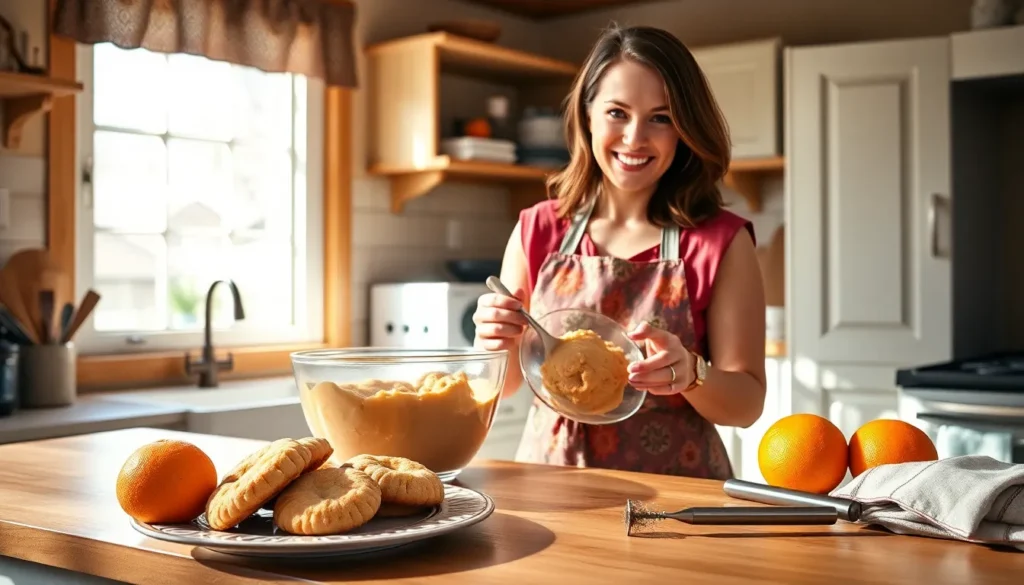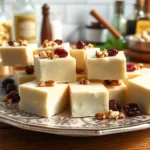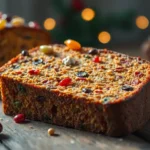We can’t think of anything more delightful than the bright citrusy aroma of freshly baked orange cookies wafting through our kitchen. These golden-hued treats capture the essence of sunshine in every bite with their perfect balance of sweet and tangy flavors that’ll make your taste buds dance.
What makes these orange cookies truly special is their incredible versatility and foolproof nature. Whether you’re a seasoned baker or just starting your culinary journey we guarantee these cookies will become your go-to recipe for any occasion. The zesty orange flavor comes from both fresh orange zest and juice creating layers of citrus goodness that shine through each tender crumb.
Ingredients
We gather simple pantry staples and fresh citrus to create these irresistible orange cookies. Each ingredient plays a crucial role in delivering that perfect balance of sweet and tangy flavors we love.
For the Cookie Dough
- 2 1/4 cups all-purpose flour
- 1 teaspoon baking powder
- 1/2 teaspoon salt
- 1/2 cup unsalted butter, softened
- 3/4 cup granulated sugar
- 1 large egg
- 2 tablespoons fresh orange juice
- 2 tablespoons fresh orange zest (from about 2 medium oranges)
- 1 teaspoon vanilla extract
- 2 tablespoons milk
For the Orange Glaze
- 1 1/2 cups powdered sugar, sifted
- 3 tablespoons fresh orange juice
- 1 tablespoon fresh orange zest
- 1 tablespoon unsalted butter, melted
- Pinch of salt
Equipment Needed
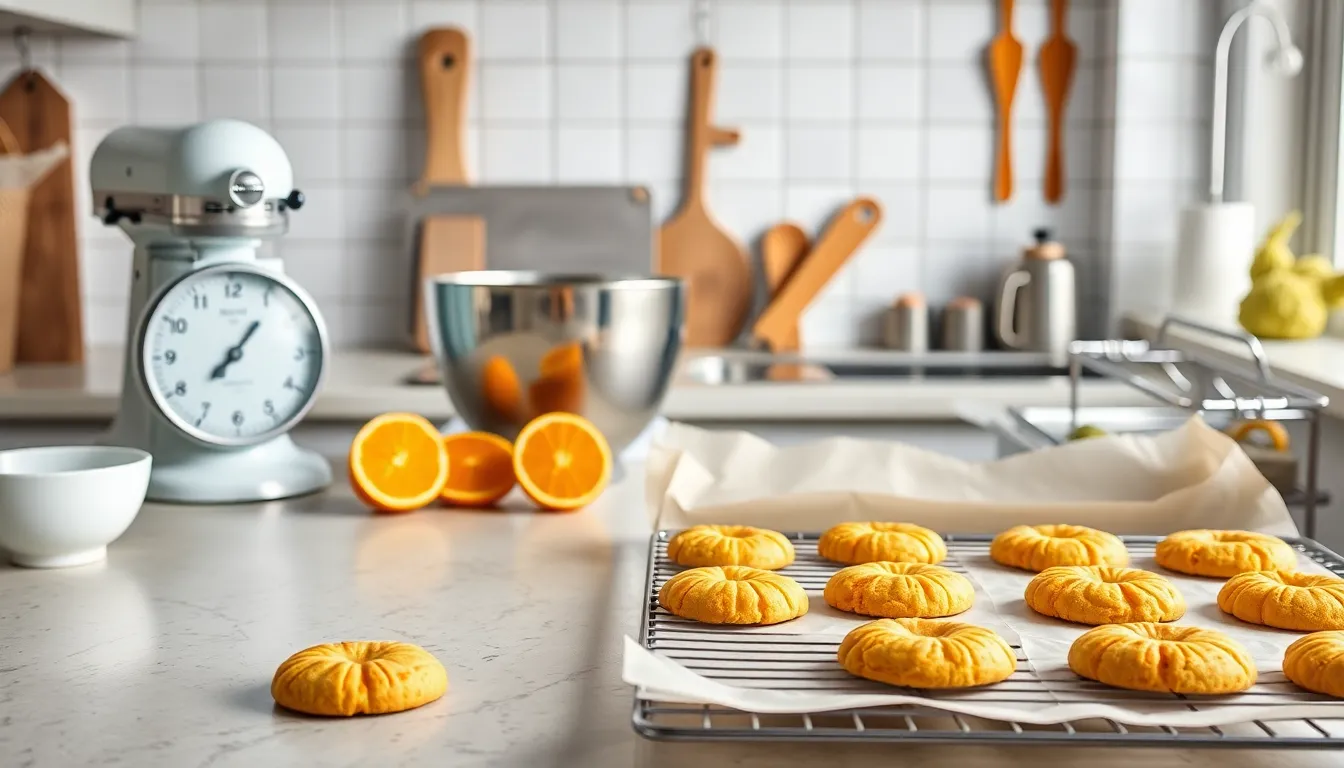
Getting the right tools makes our orange cookie baking process smooth and successful. We recommend gathering these essential items before starting your citrus cookie adventure.
Kitchen scale ensures precise measurements for consistent results every time we bake. Accurate ingredient ratios create the perfect texture and flavor balance in our orange cookies.
Large mixing bowl and spatula handle our cookie dough preparation efficiently. The spacious bowl allows proper ingredient incorporation while the spatula helps us scrape down sides for thorough mixing.
Baking sheet and parchment paper provide the foundation for even baking. Parchment paper prevents sticking and ensures easy cookie removal after our orange treats finish baking.
Oven maintains the required 350°F temperature for optimal cookie development. Proper preheating creates the ideal environment for our cookies to achieve that perfect golden brown color.
Measuring cups and spoons deliver accuracy for both dry and wet ingredients. These tools help us maintain the precise ratios that make our orange cookies consistently delicious.
Cooling rack allows proper air circulation around our freshly baked cookies. This prevents soggy bottoms and helps our orange cookies maintain their ideal texture as they cool.
Cookie cutter creates uniform shapes when we want perfectly formed cookies. This optional tool adds visual appeal to our orange cookie presentation.
Small cookie scoop portions our dough into evenly sized balls. This tool ensures consistent baking times and uniform cookie sizes across each batch we prepare.
Instructions
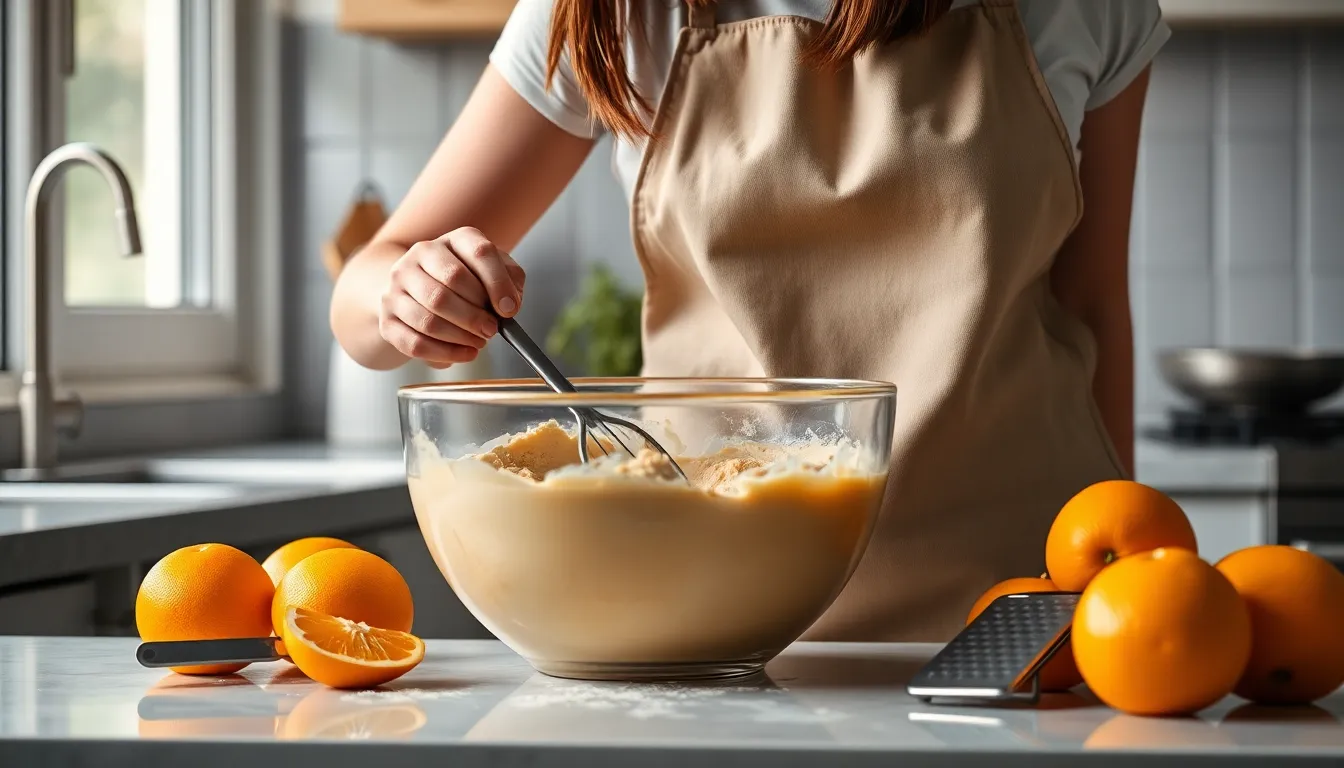
Follow these detailed steps to create perfectly soft and flavorful orange cookies with a glossy citrus glaze. We’ll guide you through each stage from ingredient preparation to the final glazing process.
Prep the Ingredients
Remove the unsalted butter from the refrigerator 30 minutes before baking to reach room temperature. The butter should yield slightly when pressed but maintain its shape. Bring the egg to room temperature by placing it in a bowl of warm water for 5 minutes.
Wash the oranges thoroughly under cold running water and pat them dry. Use a microplane grater to zest the oranges carefully avoiding the bitter white pith underneath. Extract fresh orange juice by rolling the oranges on the counter while applying pressure then cutting and squeezing them.
Measure all dry ingredients precisely using a kitchen scale for best results. Whisk together the all-purpose flour baking powder and salt in a separate bowl to ensure even distribution.
Make the Cookie Dough
Beat the room temperature butter and granulated sugar in a large mixing bowl using an electric mixer on medium speed for 3-4 minutes. The mixture should become light and fluffy with a pale yellow color.
Add the orange zest and fresh orange juice to the creamed butter mixture. Mix on low speed until the citrus ingredients are fully incorporated and the mixture appears slightly curdled. Beat in the room temperature egg and vanilla extract until the dough becomes smooth and well combined.
Gradually add the flour mixture to the wet ingredients in three additions. Mix on low speed after each addition until just combined. Pour in the milk and mix briefly until the dough comes together without overmixing.
Shape and Chill the Cookies
Scoop the cookie dough into uniform portions using a small cookie scoop or tablespoon measuring approximately 1 tablespoon each. Place the dough balls on a parchment-lined baking sheet spacing them 2 inches apart.
Check the dough consistency by gently pressing one ball with your finger. Refrigerate the shaped cookies for 1 hour if the dough feels too sticky to handle or appears to spread excessively. This chilling step helps the cookies maintain their shape during baking.
Bake the Cookies
Preheat your oven to 350°F (175°C) while the cookies chill. Position the oven rack in the center for even heat distribution.
Bake the cookies for 10-12 minutes until the edges appear lightly golden brown but the centers still look slightly underbaked. The cookies will continue cooking on the hot baking sheet after removal from the oven.
Transfer the baking sheet to a cooling rack and let the cookies rest for 5 minutes before moving them to the cooling rack individually. Allow cookies to cool completely before glazing for approximately 20 minutes.
Prepare the Orange Glaze
Sift the powdered sugar into a medium mixing bowl to eliminate any lumps. Add the fresh orange zest and orange juice to the powdered sugar.
Melt the butter in the microwave for 15-20 seconds until just liquefied. Pour the melted butter into the powdered sugar mixture along with a pinch of salt.
Whisk all glaze ingredients together until smooth and free of lumps. The consistency should coat the back of a spoon but still drip easily. Add more orange juice if the glaze appears too thick or more powdered sugar if too thin.
Glaze the Cookies
Dip the top of each cooled cookie into the prepared orange glaze or drizzle the glaze over the cookies using a spoon. Allow excess glaze to drip back into the bowl for a clean finish.
Place the glazed cookies on the cooling rack and let the glaze set for 20 minutes until it forms a smooth glossy coating. The glaze will harden slightly but remain tender to bite through.
Store the finished orange cookies in an airtight container at room temperature for up to one week. Layer parchment paper between stacked cookies to prevent the glaze from sticking.
Storage and Make-Ahead Tips
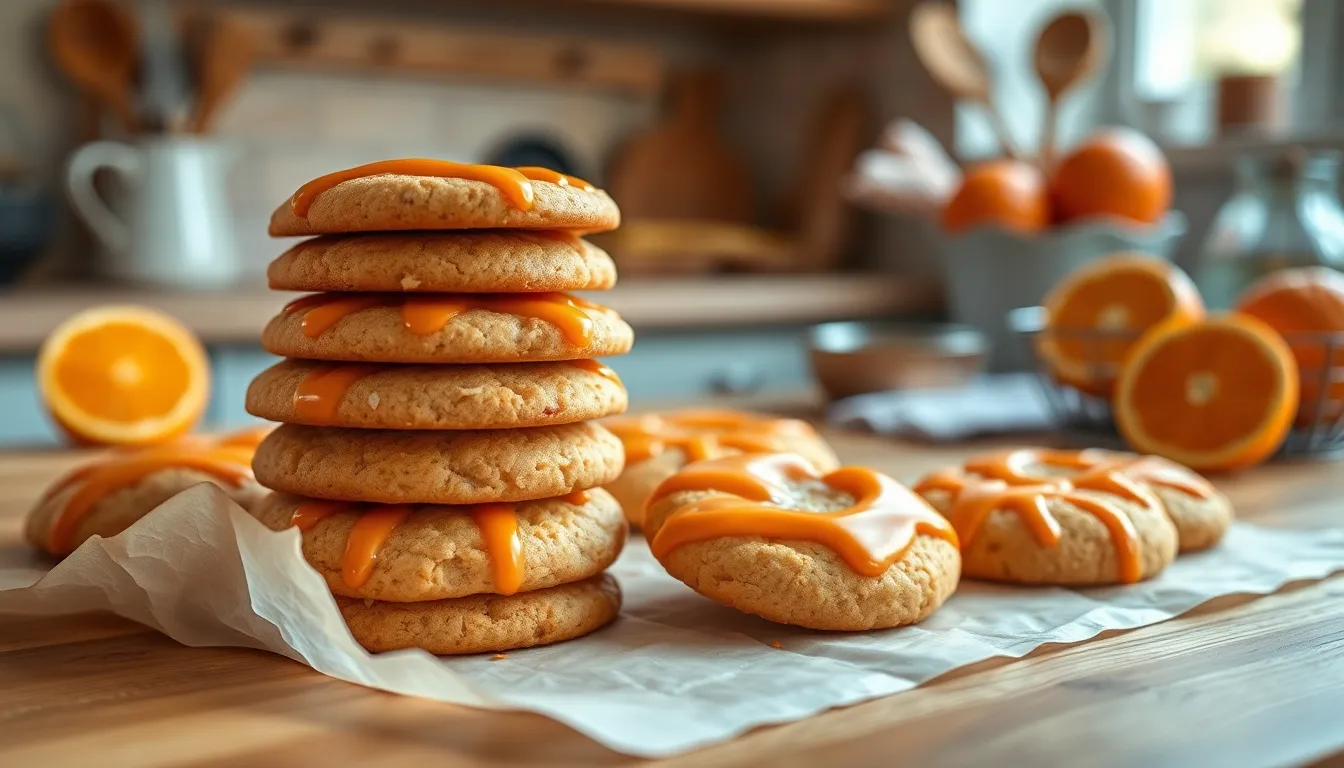
Proper storage ensures our orange cookies maintain their delightful citrus flavor and tender texture for days to come. These simple techniques also allow us to prepare cookie dough in advance for fresh-baked treats whenever we need them.
Storing Baked Cookies
We recommend storing our finished orange cookies in an airtight container at room temperature for up to 5 days. Before placing cookies in storage, we need to allow any glaze or icing to harden completely to prevent sticking between layers.
For best results, we place parchment or wax paper between cookie layers when stacking in our storage containers. This protective barrier keeps cookies from adhering to each other while maintaining their perfect shape.
| Storage Method | Duration | Temperature |
|---|---|---|
| Room temperature (airtight container) | Up to 5 days | Room temperature |
| Refrigerated (humid climates) | After 1-2 days | Cold storage |
| Frozen (unglazed) | Up to 3 months | Freezer |
| Frozen (glazed) | Up to 3 months | Freezer |
In humid climates, we transfer our cookies to the refrigerator after 1 to 2 days to maintain optimal freshness. Both glazed and unglazed cookies freeze beautifully for up to 3 months when we separate layers with parchment paper and thaw them at room temperature.
Freezing Cookie Dough
Our orange cookie dough freezes exceptionally well for future baking sessions. We can shape the dough into logs, wrap them securely, and freeze for up to 3 months for slice-and-bake convenience.
Another effective method involves scooping individual dough balls onto a lined sheet pan and freezing them solid before transferring to freezer-safe bags. This approach allows us to bake just the number of cookies we need at any time.
When ready to bake, we thaw frozen dough logs for 10 to 15 minutes before slicing. Alternatively, we can bake the dough balls directly from frozen with slight time adjustments to account for the colder starting temperature.
Make-Ahead Instructions
We can refrigerate our prepared cookie dough for up to 2 to 3 days before baking while maintaining excellent results. Covering the dough properly prevents it from drying out and absorbing refrigerator odors.
Before working with chilled dough, we allow it to sit at room temperature for about 20 minutes. This brief warming period makes the dough easier to handle when scooping or shaping our cookies.
For shaped or rolled dough varieties, we recommend chilling the formed cookies before baking to prevent excessive spreading during the baking process. This extra step ensures our orange cookies maintain their intended shape and texture.
Serving Suggestions
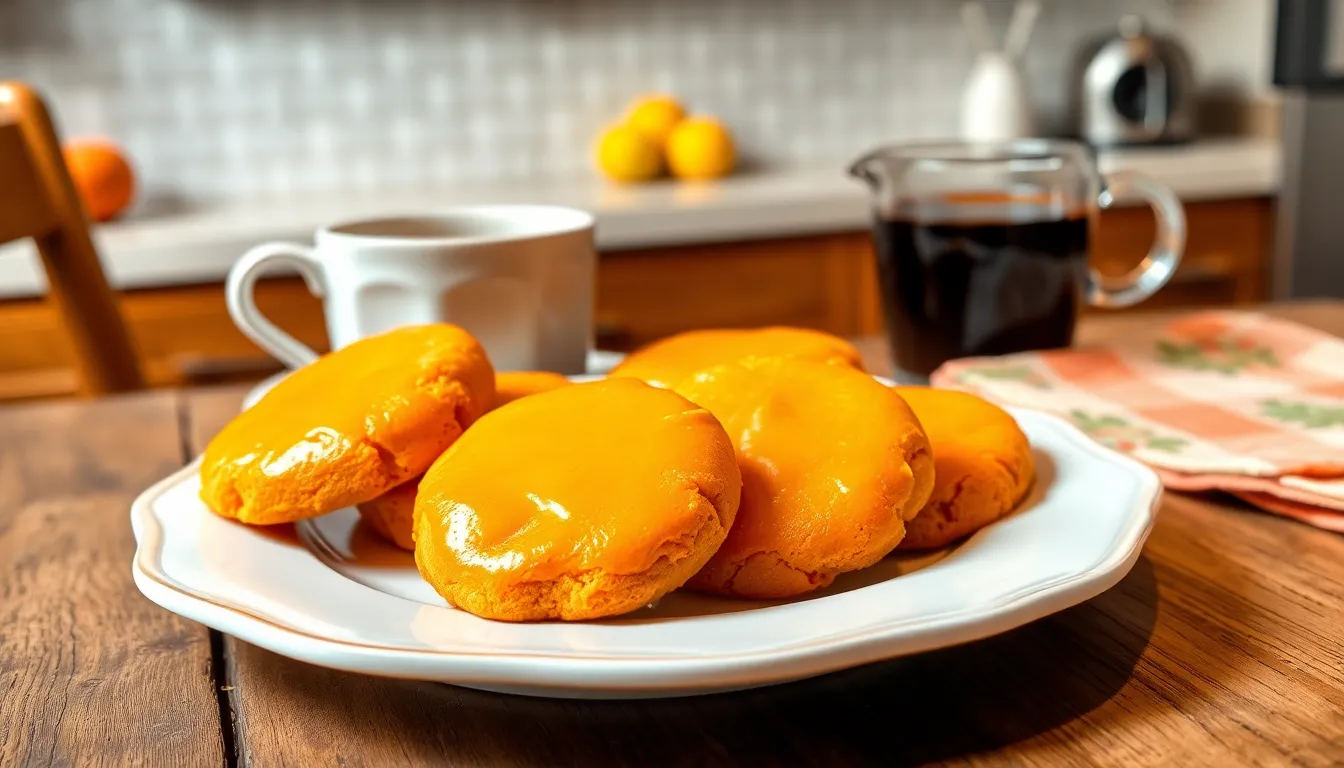
These bright citrus cookies shine when paired with the right beverages and occasions. We recommend serving our orange cookies alongside a steaming cup of coffee or black tea to complement their sweet and tangy flavor profile. The robust flavors of these hot beverages create a perfect balance with the delicate orange notes in each cookie.
For a refreshing twist, we love pairing these treats with a glass of cold milk or iced matcha. The creamy texture of milk enhances the soft, cake-like consistency of the cookies, while iced matcha provides an intriguing contrast that highlights the citrus brightness.
Our orange cookies work beautifully for various entertaining occasions. We find them ideal for informal gatherings where guests can easily grab a cookie while mingling. Their vibrant flavor makes them particularly special during holiday seasons when citrus notes add a cheerful touch to celebrations.
| Serving Pairing | Best For | Flavor Profile |
|---|---|---|
| Hot coffee or tea | Morning or afternoon | Balances sweet citrus with robust warmth |
| Cold milk | Any time of day | Enhances soft texture and mild orange flavor |
| Iced matcha | Summer occasions | Creates refreshing contrast with citrus notes |
The soft, fluffy texture of these cookies makes them perfect for dunking into warm beverages. We suggest arranging them on a decorative plate alongside your chosen drink for an inviting presentation. Their bright orange glaze catches the light beautifully, making them as visually appealing as they are delicious.
These cookies also serve wonderfully as an afternoon pick-me-up or evening dessert. We often present them on tiered serving trays for parties, where their cake-like texture and mild orange flavor appeal to guests of all ages.
Recipe Variations

Our orange cookie recipe serves as an excellent foundation for several delicious variations. These adaptations allow us to customize the cookies to suit different taste preferences and occasions.
Chocolate Orange Cookies
We transform our basic orange cookies into an indulgent treat by incorporating rich chocolate flavors. Add 1/4 cup of unsweetened cocoa powder to the dry ingredients and reduce the flour by the same amount. Alternatively, we can fold in 1/2 cup of melted dark chocolate after creaming the butter and sugar. The orange zest and juice remain essential components as they balance the chocolate’s richness with bright citrus notes. These cookies develop a deeper flavor profile where the sharpness of citrus complements the smoothness of chocolate perfectly.
Orange Cranberry Cookies
Dried cranberries create a delightful tart contrast against the sweet orange flavor in this classic combination. We fold 3/4 cup of dried cranberries into the prepared dough just before shaping the cookies. The cranberries should be chopped roughly to ensure even distribution throughout each cookie. Fresh orange zest becomes even more crucial in this variation as it provides the most vibrant citrus flavor to complement the tart cranberries. This pairing works beautifully in both drop cookie and shortbread formats.
Mini Orange Cookies
We create bite-sized versions of our orange cookies using a small cookie scoop or measuring teaspoons to portion the dough. These miniature treats are perfect for party trays and special occasions where guests prefer smaller portions. Shape the dough into 1-teaspoon portions instead of the standard tablespoon size. Reduce the baking time to 8-10 minutes since the smaller cookies will bake more quickly than their full-sized counterparts. The orange glaze works particularly well on mini cookies as each small treat gets a perfect coating of citrus sweetness.
Troubleshooting Tips
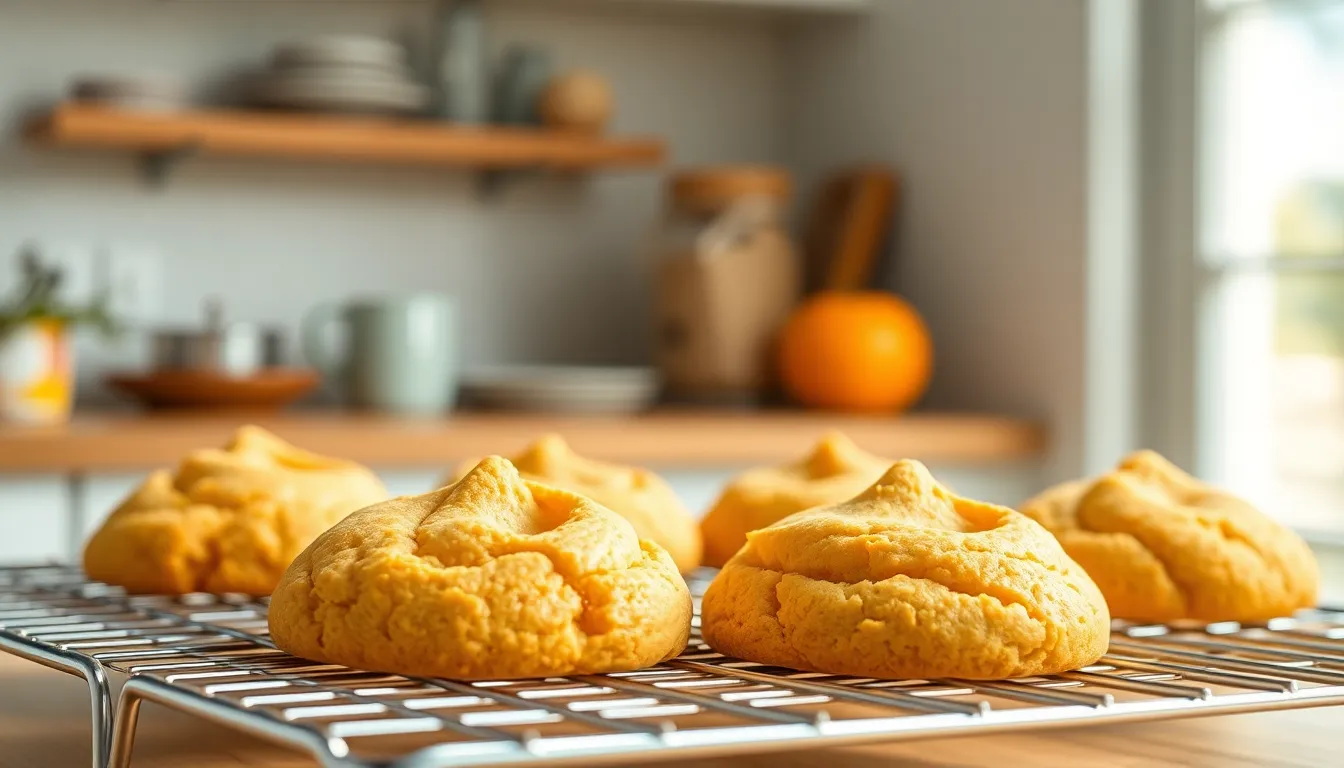
Even experienced bakers encounter challenges when making orange cookies. We’ve compiled answers to the most common issues to ensure your baking success every time.
Cookie Spreading Issues
When cookies spread too much during baking, we need to address the dough consistency. Adding more flour to your mixture prevents excessive spreading and maintains the cookie shape. Over-measuring baking soda or baking powder often causes this problem, so we recommend measuring these leavening agents precisely.
Dough Texture Problems
Sticky dough creates frustration during the shaping process. We solve this by chilling the prepared dough in the refrigerator for at least one hour before baking. This cooling period prevents thin, crepe-like cookies and makes the dough easier to handle.
Test baking becomes essential when you notice dough consistency issues. We always bake 2-3 test cookies before committing to a full batch. This practice allows us to adjust ingredients or chilling time if needed.
Air Bubble Management
Excessive air bubbles create uneven cookie surfaces and unpredictable shapes. Reducing or eliminating baking powder from your recipe minimizes these bubbles and prevents cookies from puffing up dramatically during baking. We recommend using only the amount specified in trusted recipes.
Temperature and Timing Adjustments
Oven temperatures vary significantly between models. We suggest using an oven thermometer to verify your actual temperature matches the 350°F setting. Cookies that brown too quickly indicate excessive heat, while pale cookies after the recommended time suggest insufficient temperature.
Baking time adjustments depend on cookie thickness and oven characteristics. We monitor cookies closely during the final 2-3 minutes, looking for lightly golden edges as the completion indicator. Overbaked orange cookies lose their tender texture and citrus brightness.
Cooling and Storage Answers
Improper cooling affects cookie texture significantly. We transfer cookies to wire racks immediately after baking to prevent continued cooking from residual pan heat. Cookies left on hot baking sheets become overly crisp or develop soggy bottoms.
Storage moisture control maintains cookie quality longer. We place parchment paper between cookie layers in airtight containers to prevent sticking and preserve the glazed surface integrity.
Conclusion
These orange cookies have everything we love about homemade treats – they’re bursting with citrus flavor simple to make and absolutely irresistible. We’ve covered all the essentials from ingredient selection to troubleshooting common issues so you can bake with confidence.
Whether you’re making them for a special occasion or just because you’re craving something sweet and zesty these cookies won’t disappoint. The combination of tender texture and bright orange glaze creates the perfect balance that keeps everyone coming back for more.
Now it’s time to get baking! Your kitchen will smell amazing and you’ll have a batch of delicious cookies to share with family and friends.
Frequently Asked Questions
How long do orange cookies stay fresh?
Store orange cookies in an airtight container at room temperature for up to 5 days. Place parchment or wax paper between layers to prevent sticking. In humid climates, refrigerate after 1-2 days. Both glazed and unglazed cookies can be frozen for up to 3 months for longer storage.
Can I make orange cookie dough ahead of time?
Yes, you can prepare the dough 2-3 days in advance and refrigerate it. Shape the dough into logs or scoop individual balls for slice-and-bake convenience. Let the chilled dough sit at room temperature for easier handling before baking.
What temperature should I bake orange cookies?
Preheat your oven to 350°F for optimal results. Bake the cookies for 10-12 minutes until the edges are lightly golden. This temperature ensures even baking while maintaining the cookies’ soft, fluffy texture.
What ingredients do I need for orange cookies?
For the cookies: all-purpose flour, baking powder, salt, unsalted butter, granulated sugar, egg, fresh orange juice, orange zest, vanilla extract, and milk. For the glaze: powdered sugar, fresh orange juice, orange zest, melted butter, and a pinch of salt.
How do I prevent orange cookies from spreading too much?
Chill the cookie dough before baking to prevent excessive spreading. Ensure your butter is at room temperature (not melted) when creaming with sugar. Use precise measurements with a kitchen scale, and avoid overworking the dough to maintain proper texture.
What beverages pair well with orange cookies?
Orange cookies pair beautifully with hot coffee or black tea, which complement their citrus flavor. Cold milk is perfect for dunking, while iced matcha provides a refreshing contrast. These pairings enhance the cookies’ sweet and tangy profile.
Can I customize the orange cookie recipe?
Absolutely! Try chocolate orange cookies by adding cocoa powder or melted dark chocolate. Add dried cranberries for orange cranberry cookies with tart contrast. You can also make mini versions for bite-sized treats perfect for parties and gatherings.
Why is my orange cookie dough too sticky?
Sticky dough often results from warm butter or too much liquid. Chill the dough for 30 minutes to firm it up. Ensure ingredients are at proper room temperature and measure accurately. If still sticky, gradually add small amounts of flour until workable.

